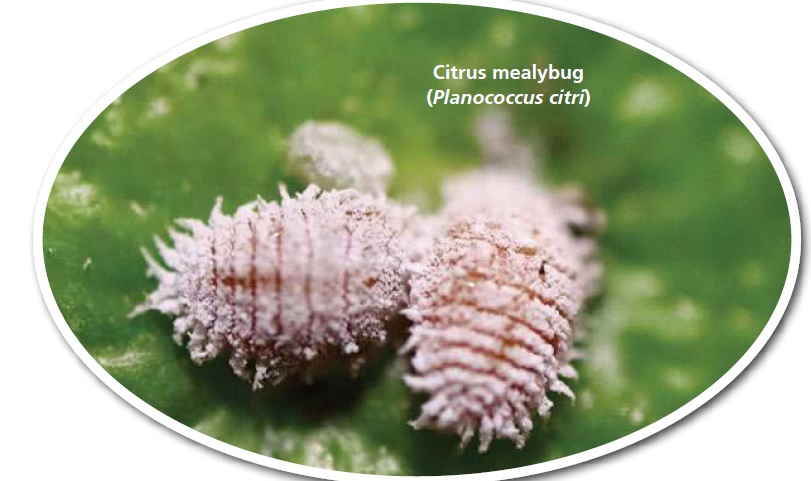Insectec is a leader in the production of natural enemies and the implementation thereof in an integrated pest management system. They are mealybug specialists and produce four different biological control products that are responsible for controlling different stages of the mealybug life cycle.
Mealybugs are small sap-sucking scale insects, coated with a white powdery wax resembling meal. They can be a serious pest to various crops by producing toxins that can cause deformation of the plant and produce, which can lead to severe yield losses and export difficulties. The parasitic wasp, Anagyrus vladimiri, is a common biological control agent that has been used with great success for many years in the agricultural industry. ANA-TEC (A. vladimiri) effectively controls mealybug targets and is well-adapted to many different crops and cropping systems.
The male and female A. vladimiri differ from one another, also known as sexual dimorphism. The females are 1-2 mm in length, brown in colour with a white and black banded antenna that has a distinctive black bulge close to the head. The males are about 0,8 mm in length, black in colour and have long black antennae filled with hairlike filaments. The pupae are a characteristic yellow-brown colour and are approximately 1,8 mm in length. The female wasps target the larger mealybug life stages, from the 3rd instar nymph to adult female mealybugs. She inserts her ovipositor into the mealybug host laying an egg into its body. Sometimes the egg is encapsulated by the mealybug leaving a distinct black spot, which is a sure sign of parasitoid activity.
After hatching, the larva consumes the entire content of the mealybug while growing through five larval instars. It then pupates within the dried-out mealybug, this is also referred to as the “mummy.” After 15 days, the adult wasp hatches from the pupa, mates, and continues to lay eggs. It takes A. vladimiri roughly 15 days to complete its life cycle from egg to adult. The adult wasp has an average life span of 7-14 days, during which a female can produce roughly 30 offspring.
ANA-TEC can be used in most fruit tree orchards and protected vegetable and ornamental crops such as citrus, pome fruit, vines, blueberries and sweet peppers. They can be used to target a variety of mealybug species, namely; Citrus mealybug (Planococcus citri), Vine mealybug (Planococcus ficus), Grape mealybug (Pseudococcus maritimus), Obscure mealybug (Pseudococcus viburni) and Oleander mealybug (Paracoccus burnerae).
The ANA-TEC product has a simple and fast in-field application method, consisting of 250 or 500 mummies with an inert carrier and is packed in Insectec’s biodegradable packaging. The success of the natural enemies’ release can only be established with proper monitoring. It is important to frequently monitor the pest and beneficial populations in the field before and after the release of ANA-TEC onto the crop. Two to four weeks after the release one can expect to see the second generation of wasps in the field. Parasitism, a black spot on top of live mealybugs, can be seen 2-3 weeks after a release. This is a good indication that ANA-TEC has been established and that subsequent generations will effectively control the mealybug infestation.
ANA-TEC can be used in conjunction with many chemical pesticides and can also be combined with Insectecs’ other products namely; CRYPTO-TEC (Cryptolaemus montrouzieri), NEPH-TEC (Nephus kamburovi) and COCCI-TEC (Coccidoxenoides perminutus). It is always best to consult with an Insectec field advisor before using any of these products.

